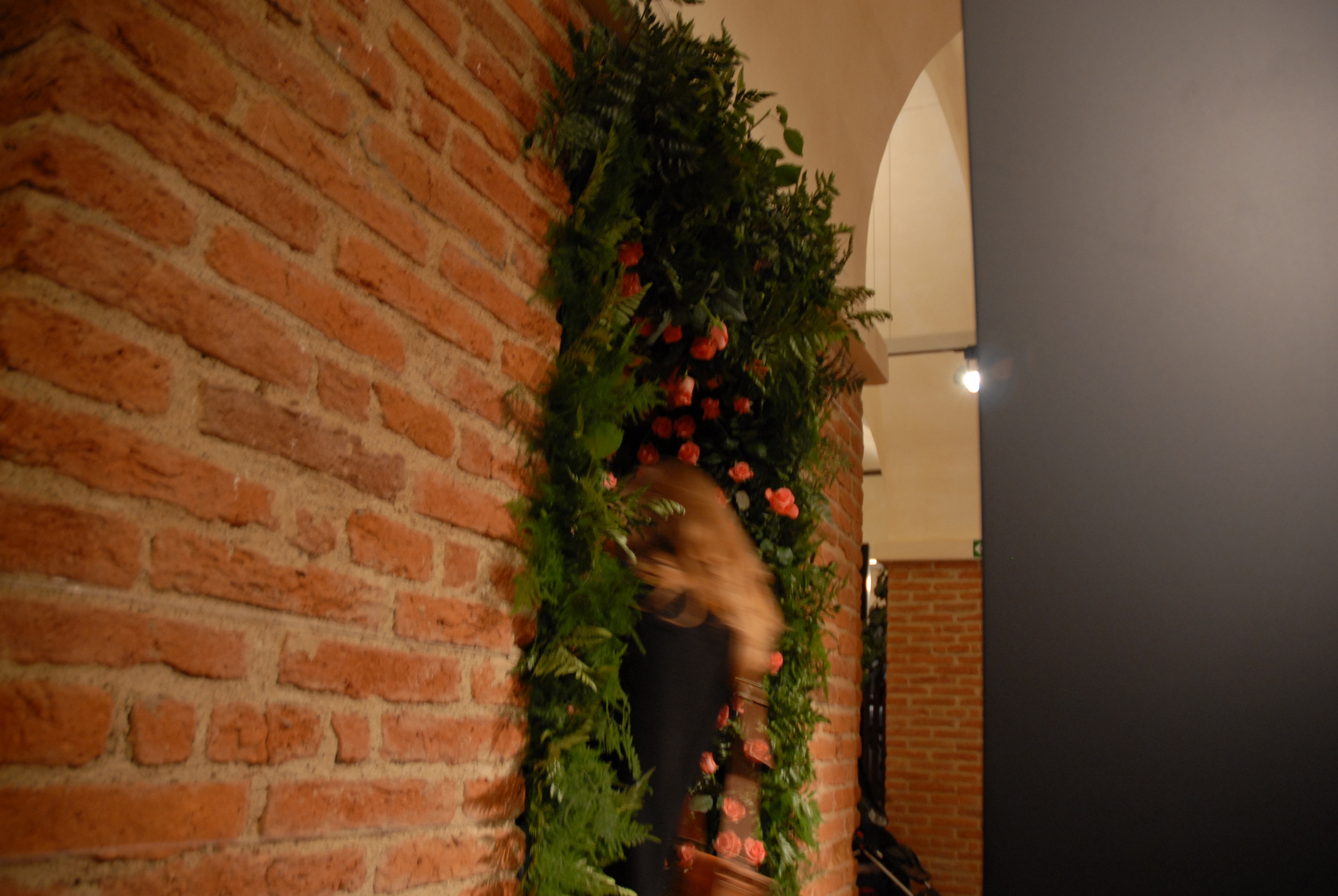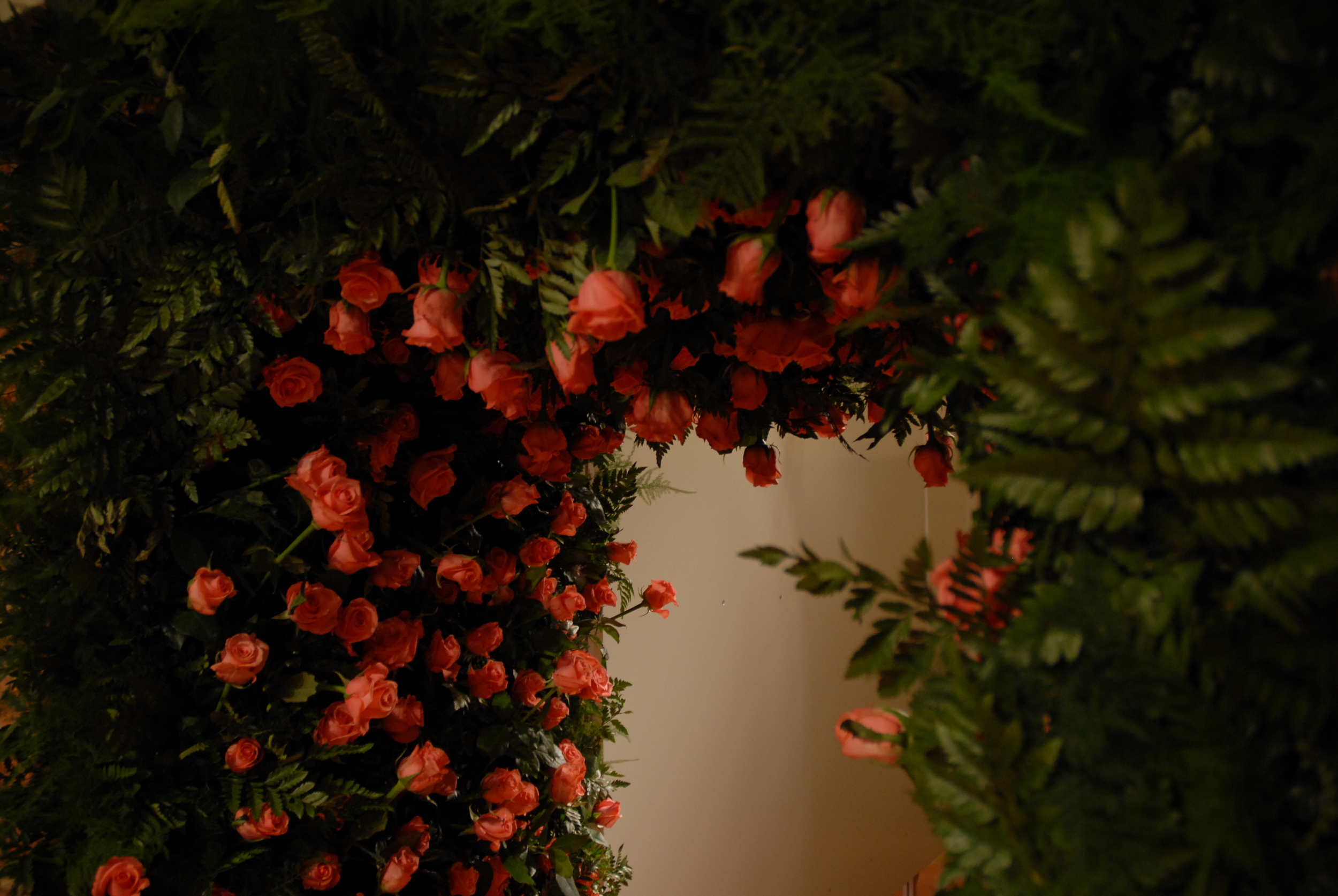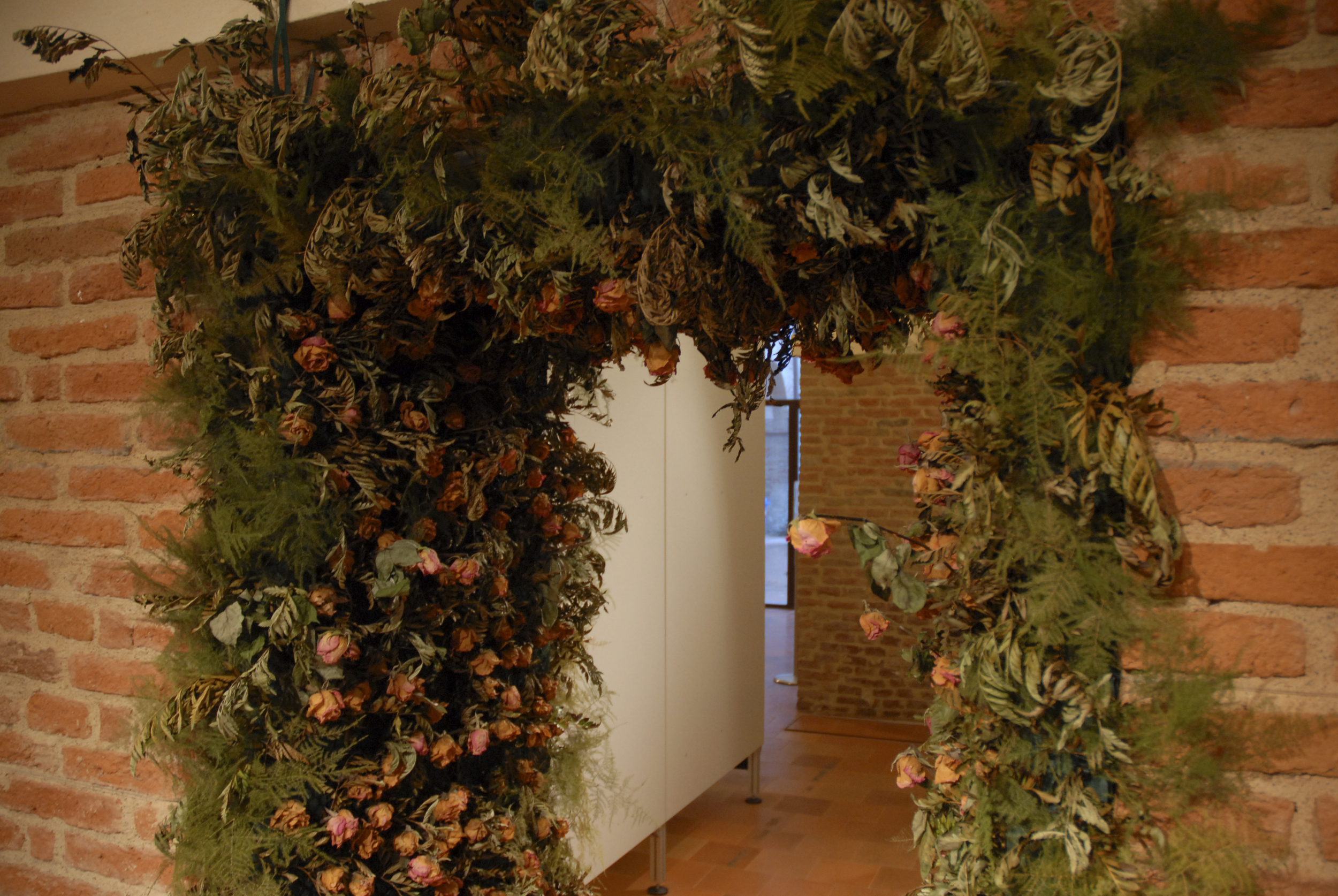Still life (natura morta): A passage / Still life (natura morta) un passaggio, 2010
Installation
A constructed aisle in the castle of Pico della Mirandola (Mirandola, Modena, Italy) offers the possibility of passing through a neo-medieval arch, its edges covered with 500 rose roses that I inserted, threading the stem into wetting sponge, letting only the flower be visible. The whole inner surface of the arch is covered by roses, for the duration of the exhibition (October 16th to November 25th 2010).
For those walking down the exhibition path the arch represents a necessary step; the passage is relatively narrow, the friction between the viewer’s body and that of the roses is unavoidable. The material reality of roses used for the installation (already demythologised when they are bought in bulk in a greenhouse in Emilia) is that of an industrial product, with a market that wants them produced in large quantities (in my research I discovered that there is no problem, apart from the cost, in finding quantities much larger than I used) identical to each other by color, size and size of the petals, a beautiful “perfection” as much as a seriality.
And the caducity, another poetic truism related to the rose, also has a prosaic implication, specifically economic: the commercial value of a rose decreases much more for each degradation stage – quantifiable around 20% a day – establishing a cost, instead of a profit, for those who need to “dispose” of it when it is unsold and faded.
In Still life (natura morta): A passage the progressive unstoppable stages of degradation, are due both to the time and the friction with the viewer’s body. In this way the viewers share the responsibility for the change, producing an ambivalent and uncanny feeling of pleasure combined with displeasure.
The 500 cut roses wither, rot, and dry out, but not necessarily all in the same manner: petals come off, change their color and smell, and also are dispersed into the environment, moving away from the arch, perhaps carried away by the shoes of a visitor.
(Presented at Dei Pico Castle, Mirandola (Modena), Italy during Oltre lo specchio curated by Elisabetta Modena, 2010)
Installazione e ricerca-testo [La rosa nel mondo contemporaneo e nell’arte. Uso, abuso, saturazione, ambivalenza e transformazioni di un simbolo]
Un corridoio costruito appositamente in un locale del castello di Pico (a Mirandola) al suo centro offre la possibilità di passare sotto un arco neo-medievale, letteralmente riempito di 500 rose di color rosa che ho inserito, infilandone il gambo, all’interno di spugne imbibenti, lasciando apparire solo il fiore. L’intera superficie interna dell’arco è coperta di rose, per tutta la durata della mostra, dal 16 ottobre al 25 novembre, 2010. L’arco rappresenta, per chi fa il percorso della mostra, un passaggio obbligato; il passaggio è relativamente stretto, l’attrito fra il corpo dello spettatore e quello delle rose è inevitabile. La realtà materiale delle rose usate per l’installazione (già fuori dal mito nel momento in cui vengono comprate all’ingrosso nella periferia emiliana) è quella di un prodotto industriale, con un mercato che le vuole prodotte in grandissime quantità. Nella mia ricerca ho scoperto che non c’è alcun problema, a parte il costo, a reperirne quantità anche molto maggiori di quella che ho usato io. Identiche tra loro per colore, taglia e dimensione dei petali, di una bellezza “perfetta” tanto quanto seriale. E anche la caducità, altro luogo comune riferito alla rosa, ha un risvolto prosaico, propriamente economico: il valore commerciale di una rosa diminuisce di molto ad ogni stadio di degradazione – quantificabile in circa 20% al giorno – per arrivare a rappresentare un costo, invece che un guadagno, per chi la deve ‘smaltire’ quando è invenduta e ormai appassita. In Still life (natura morta) un passaggio i progressivi inarrestabili stadi di degradazione, dovuti sia al tempo che all’attrito con i corpi dei visitatori della mostra, che divengono in questo modo corresponsabili del cambiamento, possono produrre una reazione ambivalente e perturbante di piacere intriso di dispiacere. Le 500 rose recise appassiscono, marciscono, seccano, ma non necessariamente tutte allo stesso modo; i petali cadono, cambiano colore e odore, ma anche si liberano nell’ambiente, si allontanano dall’arco, magari portati via dalla scarpa di un visitatore.




